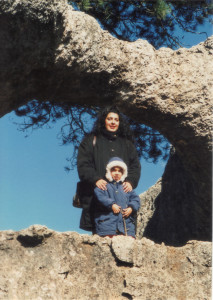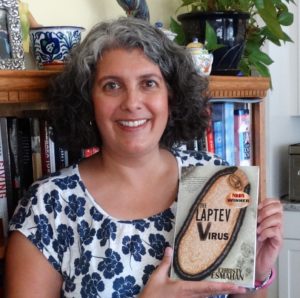Lest you get the idea that I ONLY like northern Spain, (perhaps from reading my post about the Las Médulas) today’s story is about another neat little place, southeast of Madrid, called Cuenca. It’s an amazing city whose early inhabitants, desperate for flat land, decided to build these huge stone buildings right smack on the very edge of the rock faces. I first saw the city at night (they do a lovely job with the lighting on the stone faces and the city looks like it’s straight out of a Harry Potter novel) and I was speechless. How ever did they manage to build those tall edifices, right on the brink of the precipice? And how, after centuries, have these buildings not fallen off into the abyss? I’ve attached a link below with some stunning pictures of this compact little city that must have just been carved straight from the mountain. (1) The slide show takes several seconds to get going, so give it a moment. I sat mesmerized and watched it multiple times through, remembering my visit and admiring the work of the photographer(s) who managed to capture such amazing photos. Take a good look and tell me you don’t want to fly straight there to see it in person!
You won’t be surprised to hear that the entire city has been declared a World Heritage Site, like so much of beautiful Spain. The best time to visit is right around Easter, when there are huge processions of caped and hooded people, many carrying candles and replicas of the Virgin Mary or other religious statues. It’s a very moving sight even if you are not the least bit inclined toward Catholicism. But you’ll have to book a hotel months in advance, or stay somewhere farther away and drive.
After visiting the city, be sure to head out to the nearby mountains to visit La Ciudad Encantada, (The Enchanted City) located close to the tiny village of Valdecabra—Valley of the goats. It lies about 30 Km northeast of Cuenca and it’s an impressive natural park with whimsical stone features carved by erosion over millions of years. You know how sometimes you look at a cloud and you’d swear it was an image you recognize? Well, these rock formations work the same way, and most of the images that nature formed are pretty obvious, though some are a bit of a stretch. The most famous rock formation looks like a tornado—massive on top, reducing conically into a relatively tiny part on the bottom. It’s amazing that it hasn’t tipped over after all these years! There are also rocky masses shaped like a turtle, bears, a fight between a crocodile and an elephant, a sled, a dog, some boats, two lovers about to kiss, a human face and giant mushrooms. For some great pictures, I’ve found a post by a guy named Luis Miguel (2). Take a look and see if you can pick out which is which (especially if you don’t know Spanish!)
My picture for this post was taken at a rock formation called “Puente Romano”—Roman Bridge, and you can see me with my son who was 4 years old at the time. We were high up in the mountains, and it was only April, so we needed our winter coats.
I hope you’re enjoying my stories about Spain—I know I’m loving writing about it! Please feel free to share your thoughts!
(2) Luis Miguel’s photos of Cuenca
If you enjoyed this blog post, you might also like my series of novels, Bueno, Sinco and Brujas, which takes place in Santander, Spain.




2 comments
1 pings
Author
What a wonderful memory, Salvador! I’m so happy you shared that!
My only trip to Spain was in 1991 for some pre-olympics near Barcelona. Visiting some friends in Valencia who took me to some wonderful places. One of them was Cuenca and its “casas colgadas” which I can’t forget. Just enjoyed that day trip again through your precisely descriptive lines.
[…] we took to Cuenca, back in February. If you’ve read my older blogposts, you might remember that I wrote about a trip that I took to Cuenca in the mid […]